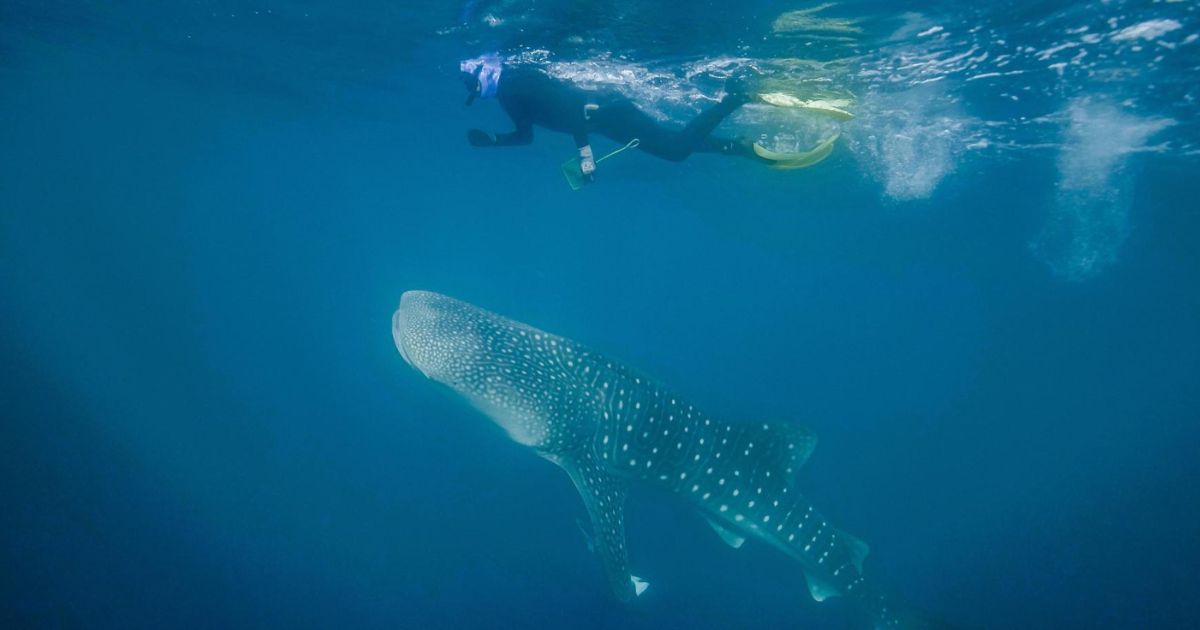Marine scientists have discovered that whale sharks eat plants, making the iconic fish the world's largest omnivore.
Whale sharks are filter feeders and have long been observed eating krill at Western Australia's Ningaloo Reef.
But when researchers analysed biopsy samples from whale sharks at the reef, they discovered the animals were actually eating a lot of plant material.
"This causes us to rethink everything we thought we knew about what whale sharks eat," said Australian Institute of Marine Science fish biologist Dr Mark Meekan. "And, in fact, what they're doing out in the open ocean."
The finding makes whale sharks -- which have been reported up to 18m long -- the world's largest omnivore.
"On land, all the biggest animals have always been herbivores," Dr Meekan said.
"In the sea we always thought the animals that have gotten really big, like whales and whale sharks, were feeding one step up the food chain on shrimp-like animals and small fishes.
"Turns out that maybe the system of evolution on land and in the water isn't that different after all." The research was published in the journal Ecology.
To find out exactly what the whale sharks were eating, the researchers collected samples of possible food sources at the reef, from tiny plankton to large seaweed.
They then compared the amino acids and fatty acids in the plankton and plant material to those in the whale sharks.
Dr Meekan said the whale shark tissue contained compounds found in Sargassum, a type of brown seaweed common at Ningaloo, which breaks off the reef and floats at the surface.
"We think that over evolutionary time, whale sharks have evolved the ability to digest some of this Sargassum that's going into their guts," he said.
"So, the vision we have of whale sharks coming to Ningaloo just to feast on these little krill is only half the story. They're actually out there eating a fair amount of algae too."
CSIRO Oceans and Atmosphere organic biogeochemist Dr Andy Revill, who analysed the whale shark tissue using compound-specific stable isotope analysis, said the technology allowed scientists to study what animals were using for energy and growth, not just what they were eating.
"Something like a whale shark, which swims through the water with its mouth open, is going to ingest a lot of different things," he said.
"But you don't know how much of that has been used by the animal and how much just goes straight out the other end.
"Whereas stable isotopes, because they're actually incorporated into the body, are a much better reflection of what the animals are actually utilising to grow."
Biological oceanographer Dr Patti Virtue, from the University of Tasmania's Institute for Marine and Antarctic Studies, said she was surprised by the whale shark's biochemical signature.
"It's very strange, because in their tissue they don't have a fatty acid or stable isotope signature of a krill-feeding animal," she said.
The researchers also caught whale shark poo with a net and analysed it.
"The poo did show that they were eating krill," Dr Virtue said. "But they're not metabolising much of it."
This AIMS whale shark research project is supported by Santos and INPEX as Joint Venture participants in the Van Gogh Development.
By Australian Institute of Marine Science
Journal Reference:
M. G. Meekan, P. Virtue, L. Marcus, K. D. Clements, P. D. Nichols, A. T. Revill. The world's largest omnivore is a fish. Ecology, 2022; DOI: 10.1002/ecy.3818



